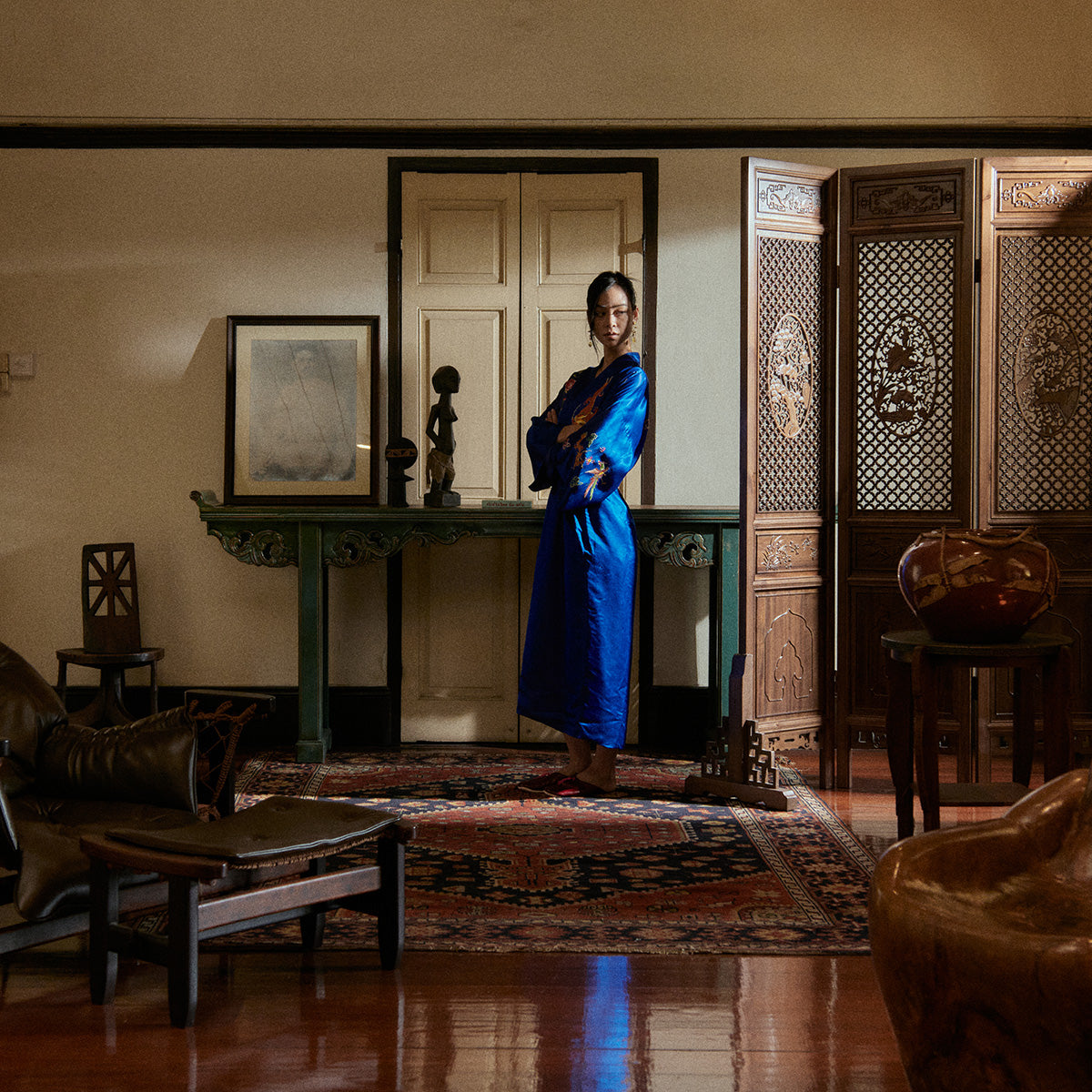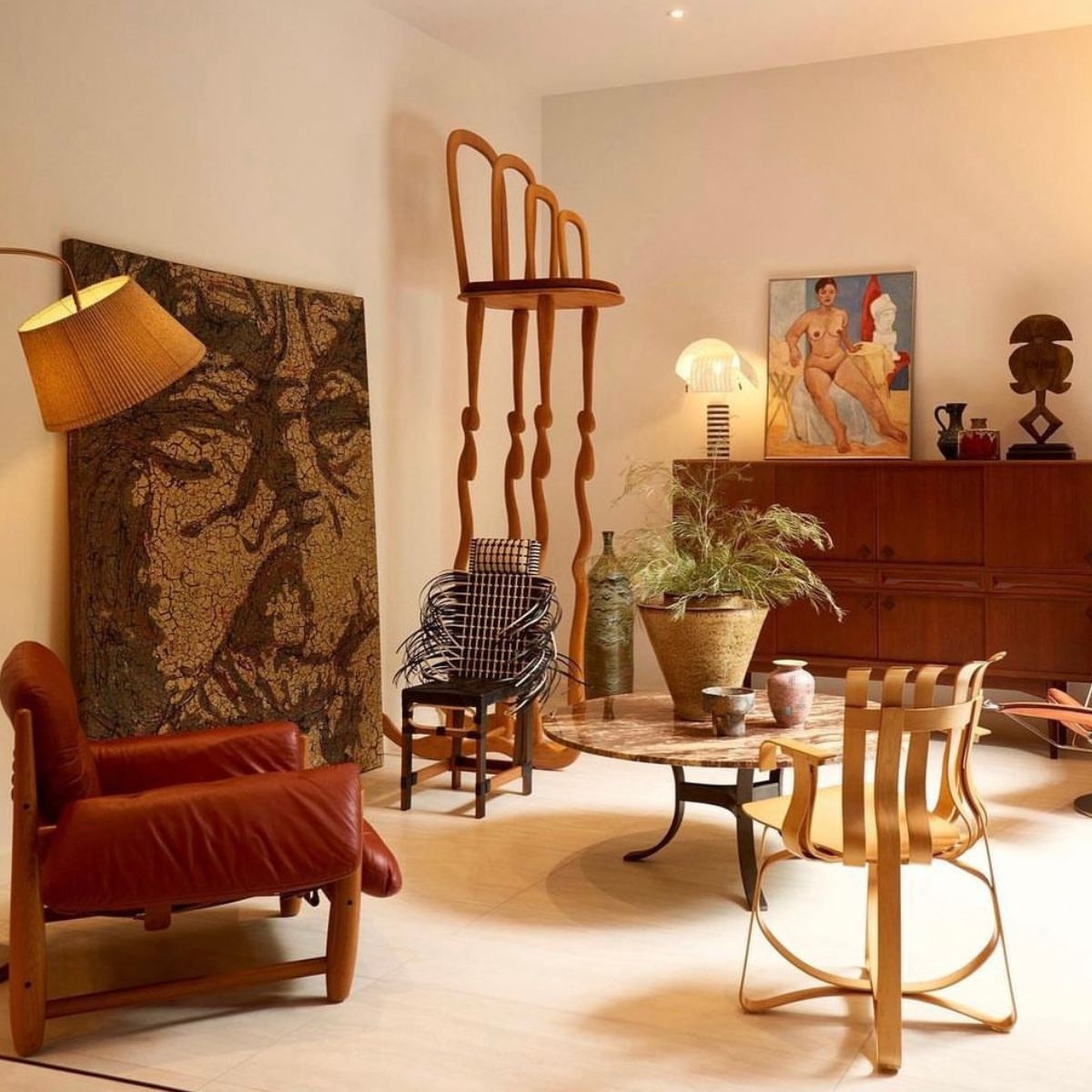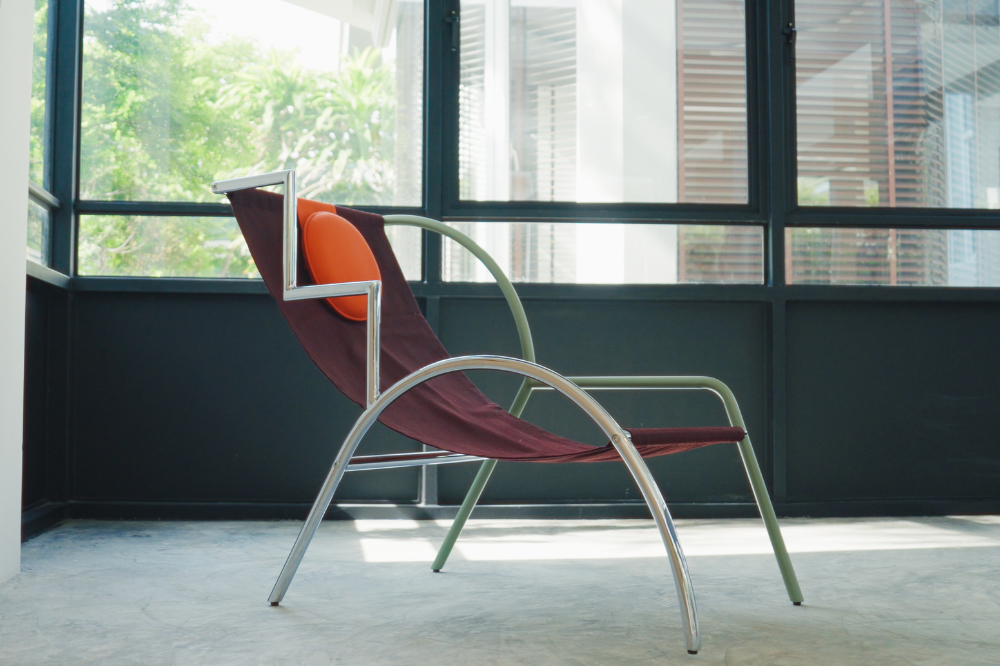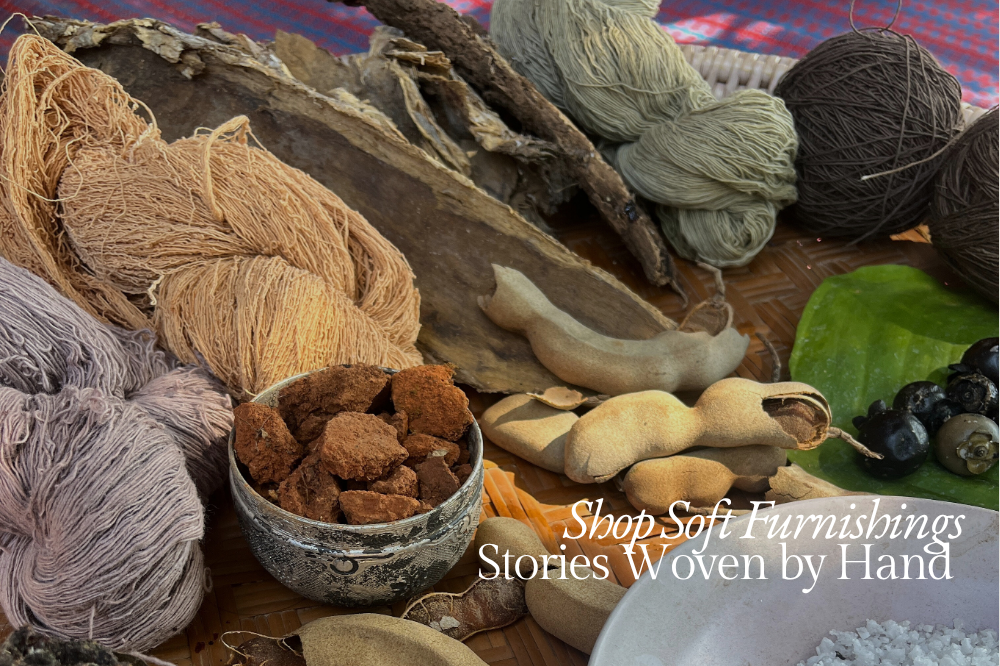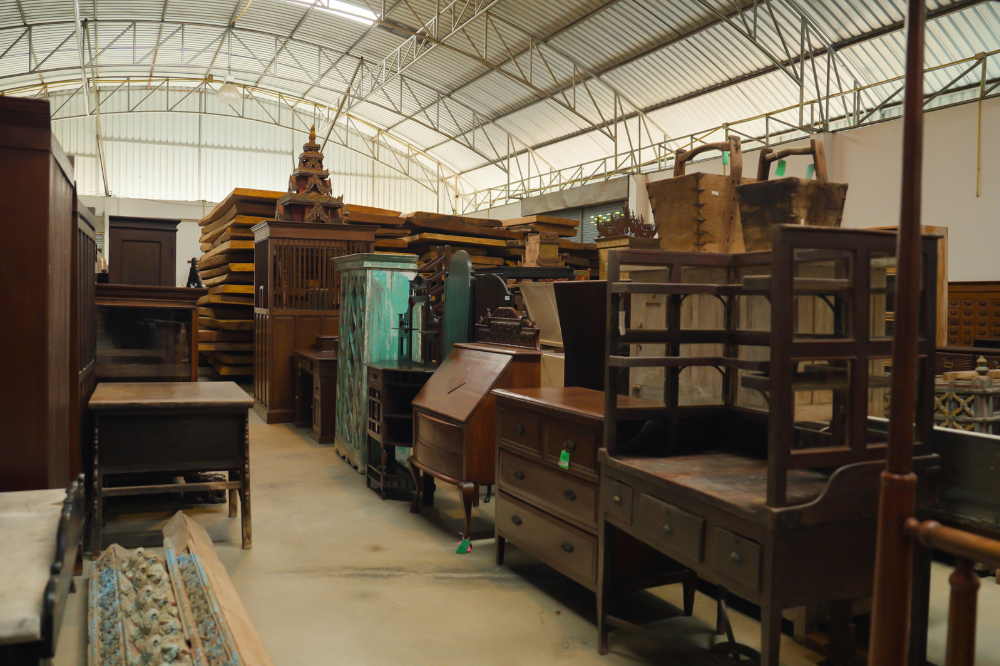Before KAOI was ever a brand, it existed in the form of boredom, intersected with a desire to explore uncharted territory, and a longing for something new and perhaps challenging. And like those who’ve come before them, and many of those who shall follow, one thing remained constant: passion.

Above: HED Volcanica, Latest Series of Lamp Design made from Primitive Volcanic Stone
Chatdaroon “May” Narkphanit, founder and designer of KAOI, spent years in the field of graphic design, from her time in university to the initial stages of her career as a graphic designer.

Above: Iconic The Ebba Chairs in Pesto & Bolognese
Work, in a setting where passion was absent, was clean, structured, and logical, which too often meant repetition, mundanity, and at times, boredom.
And as someone who described herself as easily bored, May was itching for something new and exciting, and she soon found herself sketching, chasing a new kind of curiosity that began to form. What if her two-dimensional ideas could take on a third?
In chasing this question, KAOI’s story then began to unfold with a chair.
The shape emerged first. Form over function was the name of the game. In borrowing visual elements from her background in communication design, the rules of production suddenly existed in parallel to creativity, and for May, those lines aren’t expected to merge.
Unconstrained by materiality, these early drawings shaped themselves into the essence of KAOI, where function unfolds around form.
There was no formal plan for the brand. Even the name came about by chance, a suggestion from a friend who proposed KAOI, a Thai word meaning "chair." It stuck. And soon, what started as a sketch in May’s free time would snatch the attention of one of Bangkok’s most notable design studios.

A Catalyst in Collaboration
May’s debut product, the EBBA Beach Chair, existed primarily as an idea on paper until she sought out product designers online. By sheer chance, or destiny, if you believe in it, she found and reached out to Thinkk Studio.
As luck would have it, it turned out that May had reached out just in time for the studio’s upcoming exhibition titled “Why Do You Need Another Chair?” Describing the timing as fortuitous would be an understatement of a lifetime, as KAOI’s chair found its way onto the exhibition despite only having a few examples in existence.
From sketches to chairs, it all transpired rather quickly. But momentum only continued to build from there on out. This early exposure proved to be instrumental as it soon opened doors that May hadn’t expected. This included interest from Architectural Digest, which reached out inquiring about KAOI’s chairs, marking an early interest in KAOI from a renowned voice in the world of architecture and interior design.
This, however, was just the beginning. Soon, the Museum of Modern Art in New York came knocking, which culminated in May’s work finding a spot across the pond. Though KAOI’s work was displayed within the retail space rather than in the museum, the recognition still gave the brand a much-needed international visibility within its formative stages.
The recognition was less about validation than it was direction. It helped shape the KAOI’s target audience and confirmed that their approach could resonate far beyond Thailand’s borders.
Above: The Buri Vase - 100% Marble
The Shape of an Idea
KAOI’s design language emerged from May’s visual instincts. Her foundation in communication expanded her vocabulary rather than acting as a hindrance. In two-dimensional sketches, there are no boundaries, no production constraints. That freedom carries over into her furniture, where her pieces are playful without being too over the top, structured without being rigid.
The EBBA Beach Chair became the first signature. Its asymmetric silhouette, where one armrest is smooth and the other features a zigzag pattern, had a degree of familiarity, but from a completely different perspective. But what exactly made it stand out? It invited interaction.
The chair invited proactiveness. It’s modular, allowing you to change, personalise, and live with it. Just as May described herself as easily bored, EBBA served as a reflection of herself, where boredom is thought of as a compass. It points toward the next idea, the next adjustment, the next shape.
With this, customisation is not a trend in KAOI’s practice. It is foundational. The process of designing something that can be endlessly altered ultimately means tougher production challenges, from tighter tolerances to more complex assembly.
But such is life, and these are worthwhile compromises for May and KAOI as a brand. This way, the designer’s joy continues to live on and is shared with the customer, who gets to leave their own imprint on the final piece.

Carving from the Unexpected
While the brand began with chairs, its evolution mirrors that of May’s curiosity. During a personal project, designing and building her home, she discovered a marble factory in Saraburi, which offered a new canvas.
Every slab of marble is unique, and if you’ve got the eye, completely distinguishable from one another. There is perfection in impurity in a similar sense to how there is uniqueness within reluctance to conform, which sums up KAOI’s design ethos perfectly.
This newfound adoration began from afar. May observed, learned, and studied not just how the material behaved, but also how the craftsmen worked.

This soon culminated in the next two instalments of KAOI’s lineup, the HED Lamp and BURI Vase and Tray series. Aside from form and modularity, these pieces introduced the complexities of working with a natural material, a new challenge.
Marble cannot be shaped without waste, so leftover cuts are repurposed within the same collection. The result is harmony. Minimal, but with intent.
Rather than impose design on top of craft, KAOI works with what exists. This relationship between designer and maker is not transactional. It is collaborative. And only through these partnerships can the final object evolve to become more than just a product; it morphs into a shared expression of skill and vision.

Functional Art for Everyday Rituals
If there was a line between furniture and art, it would be barely visible through the eyes of KAOI, and the Melt Candle series is proof of concept. Inspired by daily rituals and the human form, the candles resemble figurines that hold space as much as they hold scent. Each represents a time of day, from morning to night, and the colour palette reflects a transition in light and mood.
The soft curves of the candles emerged from the most unlikely of muse, a steamed bun. And May saw in it the same qualities she wanted in her design: warmth, intimacy, and a touch of the unexpected.
The candles, like her chairs, are conversation pieces. But they also tap into something far beyond the spoken word. They become part of people’s lives through moments that aren’t always visible, before bed, during reflection, or when calm is needed.

A Playful Identity
Across all KAOI’s collections, whether it’s the EBBA Chair, the BJORN Button Stool, or the HED Marble Lamp, there’s a touch of playfulness. But it’s presented through a desire to evoke feeling rather than a shout for attention.
The BJORN stools take cues from fashion. The seat takes inspiration from buttons, and just like a seamstress swaps fabrics, the stool suggests adaptability. Here again, modularity is leaned into. The stool was never intended to sit still. It has potential, and there exists an openness to change.
If there is one thing that won’t ever change in the story of KAOI, it's changeability, as this reflects May at her very core: to not be static, nor to be trend-driven, but designed to adapt, to stretch, and to keep evolving.

Design as Process, Not Product
Everyone has an inner designer, and KAOI’s role is to give that part of them something to work with. Perhaps through a chair that openly invites mixing and matching, every object is an opening to explore.
The future holds new furniture, including tables and shelving systems. But the focus remains the same: to create space for interpretation, to leave room for the user, and to design not just for now, but for what could be. Creativity, for May and KAOI, does not need to be loud. Sometimes, it only needs to be honest and curious.
With every midnight chime and as time ticks on, KAOI continues to craft objects that transcend their physical form, extending to a way of seeing. And now, in partnership with Surround Living, more are invited to explore.
